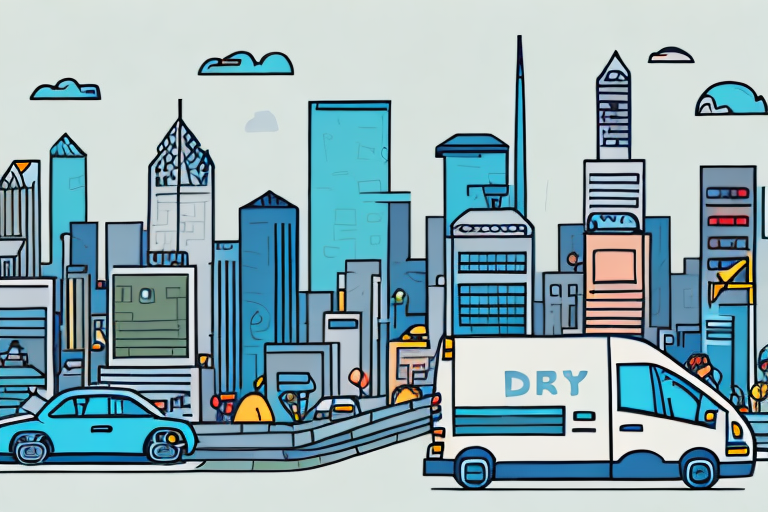Defining a Clear Value Proposition
In the highly competitive delivery industry, establishing a clear value proposition is essential for standing out. A value proposition outlines what makes your delivery service unique and why customers should choose you over competitors. This could be faster delivery times, competitive pricing, specialized services, or exceptional customer support.
For example, e-commerce sales worldwide have been steadily increasing, emphasizing the need for reliable and efficient delivery services. By pinpointing and communicating your unique strengths, you can attract and retain a loyal customer base.
Furthermore, a well-defined value proposition assists in aligning your business strategies and resources effectively. It ensures that all team members are focused on delivering what differentiates your service, thereby enhancing overall business performance and customer satisfaction.
Leveraging Technology and Data Analytics
Streamlining Operations with Advanced Technology
Technology plays a pivotal role in optimizing delivery operations. Implementing automated order processing systems, GPS tracking, and real-time data analytics can significantly enhance efficiency and reduce operational costs. For instance, businesses using AI-driven logistics have reported improvements in route optimization and delivery times.
Utilizing Data Analytics for Informed Decisions
Data analytics provides valuable insights into customer behavior, delivery performance, and market trends. By analyzing this data, delivery businesses can make informed decisions to improve their services. For example, McKinsey & Company highlights that data-driven companies are 23 times more likely to acquire customers and 19 times more likely to be profitable.
Building a Strong Brand and Enhancing Customer Experience
Establishing a Memorable Brand Identity
A strong brand identity, including a memorable logo, consistent visual style, and clear brand voice, helps build trust and credibility with customers. Consistency in branding across all platforms reinforces your company's presence in the market.
Creating a Seamless Customer Experience
Customer experience is paramount in the delivery industry. Providing accurate tracking information, timely updates, and multiple communication channels (such as email, phone, and social media) enhances customer satisfaction. According to a PwC report, 73% of consumers consider customer experience an important factor in their purchasing decisions.
Focusing on Sustainability and Corporate Responsibility
With growing environmental concerns, sustainable practices have become a significant differentiator. Implementing eco-friendly measures, such as using electric or hybrid vehicles, reduces carbon emissions and appeals to environmentally conscious consumers. Additionally, supporting social causes and engaging in corporate social responsibility (CSR) initiatives can enhance your company's reputation and foster customer loyalty.
Research from the Nielsen Global Survey indicates that 81% of global respondents feel strongly that companies should help improve the environment, highlighting the importance of sustainability in business strategies.
Adapting to Market Trends and Consumer Demands
Embracing E-commerce Growth
The surge in e-commerce has reshaped consumer expectations, with an increasing demand for same-day and next-day delivery services. Adapting to these trends requires investment in infrastructure, such as automated warehouses and efficient delivery networks.
Incorporating Sustainable Delivery Options
As consumer awareness about environmental impact grows, offering sustainable delivery options can provide a competitive advantage. This includes using recyclable packaging, optimizing delivery routes to reduce fuel consumption, and partnering with local suppliers to minimize the carbon footprint.
Managing Costs and Maximizing Profitability
Optimizing Operational Efficiency
Effective cost management involves optimizing delivery routes to save time and fuel, negotiating favorable rates with suppliers, and leveraging bulk shipping discounts. Implementing a transportation management system (TMS) can automate and enhance route planning, leading to significant cost reductions.
Investing in Technology for Long-Term Savings
Investing in technologies like warehouse management systems and GPS tracking not only improves efficiency but also reduces long-term operational costs. According to Harvard Business Review, businesses that invest in automation technologies report a 20% increase in productivity.
Overcoming Challenges and Strategizing for Growth
Addressing Technological Advancements
Keeping up with rapid technological changes is a common challenge. Staying ahead involves continuous investment in the latest technologies, training employees, and adopting best practices to maintain competitiveness.
Building a Resilient Workforce
Attracting and retaining skilled employees is crucial. Offering competitive wages, benefits, and opportunities for professional development can reduce turnover rates and build a dedicated workforce. A Bureau of Labor Statistics report indicates that companies with high employee satisfaction have significantly lower turnover rates.
Forming Strategic Partnerships
Collaborations and partnerships with complementary businesses can expand your market reach and enhance service offerings. For example, partnering with local retailers can provide bundled delivery services, offering greater convenience to customers and increasing market share.
In conclusion, delivery businesses can thrive in a competitive marketplace by defining a clear value proposition, leveraging technology and data analytics, building a strong brand, focusing on sustainability, adapting to market trends, managing costs effectively, and overcoming industry challenges through strategic planning and partnerships. Implementing these strategies positions businesses for long-term growth and success in the dynamic delivery landscape.




















